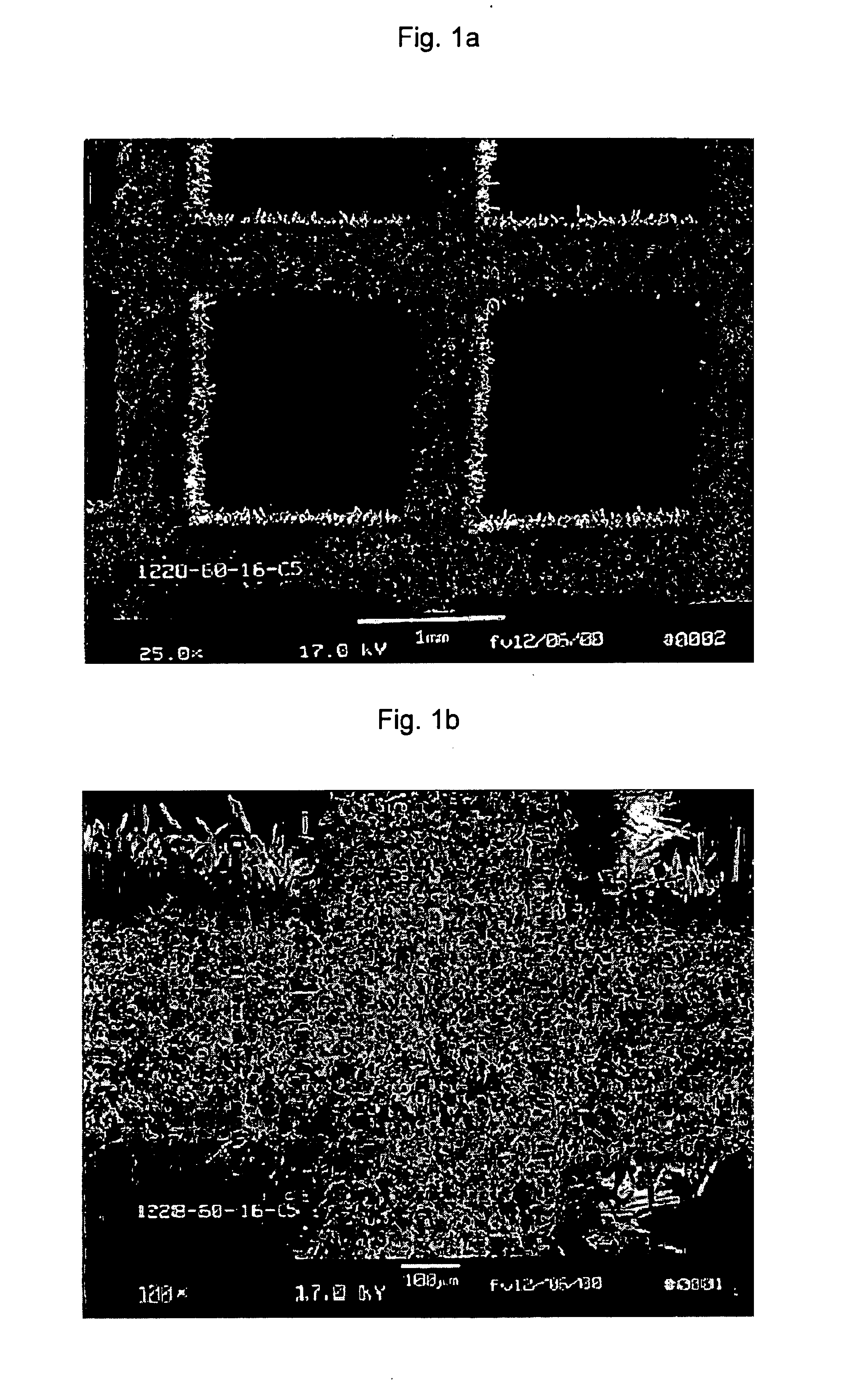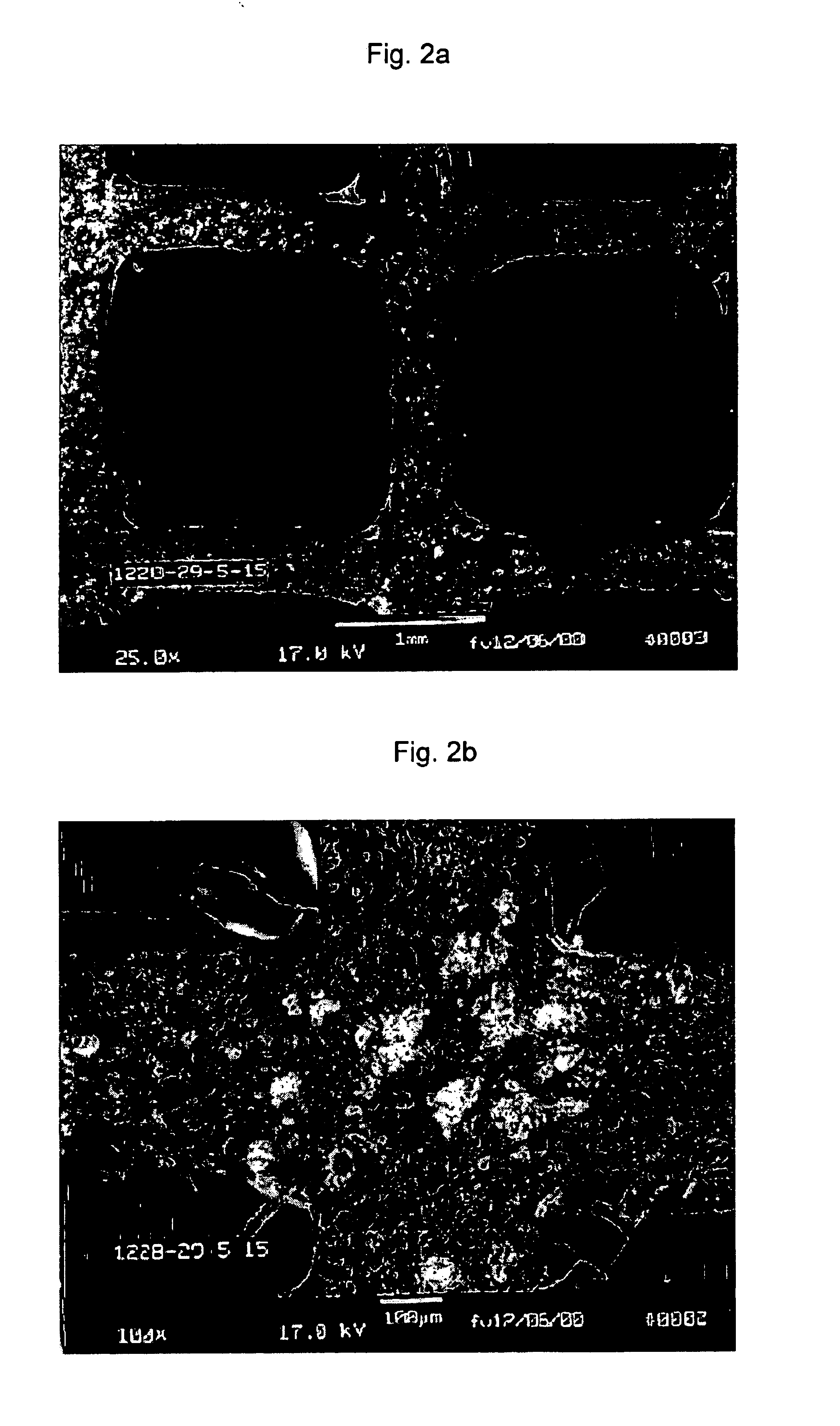Catalytic devices and method of making said devices
a technology of catalysts and devices, applied in the direction of physical/chemical process catalysts, lighting and heating apparatus, separation processes, etc., can solve the problems of increasing initial start-up pollution, ineffective reduction of emissions, and too slow catalytic reaction rate for effective treatment of exhaust gas, etc., to achieve faster lightoff and thin catalyst coating
- Summary
- Abstract
- Description
- Claims
- Application Information
AI Technical Summary
Benefits of technology
Problems solved by technology
Method used
Image
Examples
example 1
[0057]Square channel honeycombs having a cell density of about 240 cells per square inch and a wall thickness of about 0.013 to 0.014 inch were formed by extruding a mixture of natural ball clay (Todd Dark grade, Kentucky-Tennessee Clay Company), κ-alumina (ALCOA gibbsite calcined at 1100° C.) and polymer binders. The clay and alumina were mixed in proportions to give an Al:Si atom ratio of 3.15. A honeycomb was extruded. The extruded honeycomb was then slowly heated in air up to 1000° C. for one hour in order to burn off the polymeric binder and drive off the clay's structural water. The resulting calcined honeycomb was cut to the size required for testing and then converted to acicular mullite in a vacuum furnace attached to a SiF4 source and equipped to allow control of the gas atmosphere.
[0058]The calcined honeycomb was heated under vacuum to 735° C. and held at that temperature for at least one hour, then cooled under vacuum to about 720° C. At this point, SiF4 gas was added to...
example 2
[0062]Example 2 was prepared and tested in the same way as Example 1, except that the platinum concentration was 1.56 grams per liter and the light-off temperature was 233° C. and extinction temperature of 200° C. (also shown in Table 1).
example 3
[0063]Example 3 was prepared and tested in the same way as Example 1, except that the aqueous solution of diaminedinitritoplatinum concentration was 0.85 percent by weight thereof, the concentration of platinum was 2.03 grams per liter and the light-off temperature was 224° C. and extinction temperature of 185° C. (also shown in Table 1).
PUM
| Property | Measurement | Unit |
|---|---|---|
| box size | aaaaa | aaaaa |
| box size | aaaaa | aaaaa |
| aspect ratio | aaaaa | aaaaa |
Abstract
Description
Claims
Application Information
 Login to View More
Login to View More - R&D
- Intellectual Property
- Life Sciences
- Materials
- Tech Scout
- Unparalleled Data Quality
- Higher Quality Content
- 60% Fewer Hallucinations
Browse by: Latest US Patents, China's latest patents, Technical Efficacy Thesaurus, Application Domain, Technology Topic, Popular Technical Reports.
© 2025 PatSnap. All rights reserved.Legal|Privacy policy|Modern Slavery Act Transparency Statement|Sitemap|About US| Contact US: help@patsnap.com



